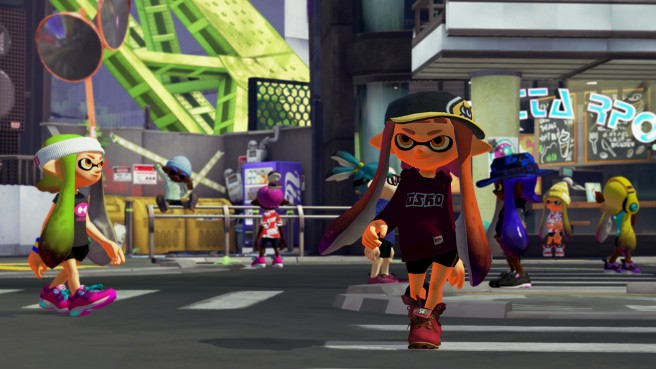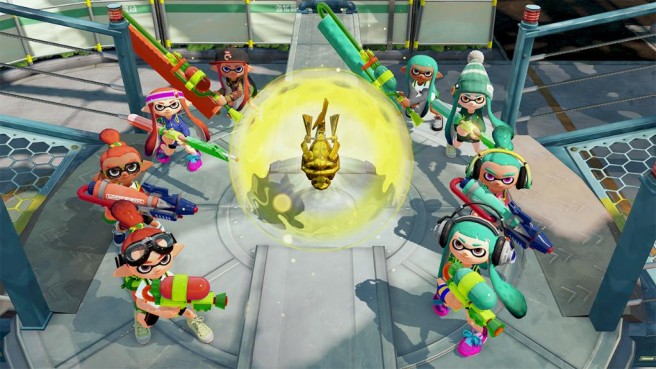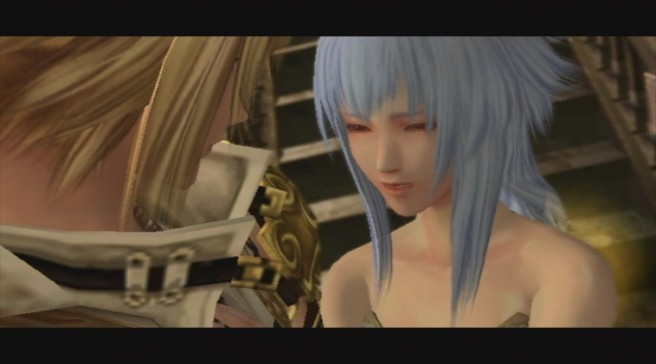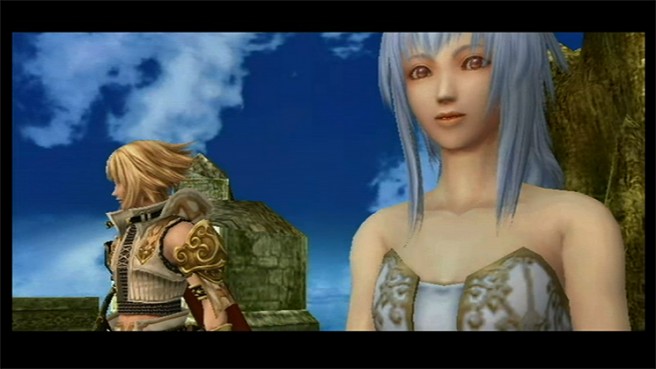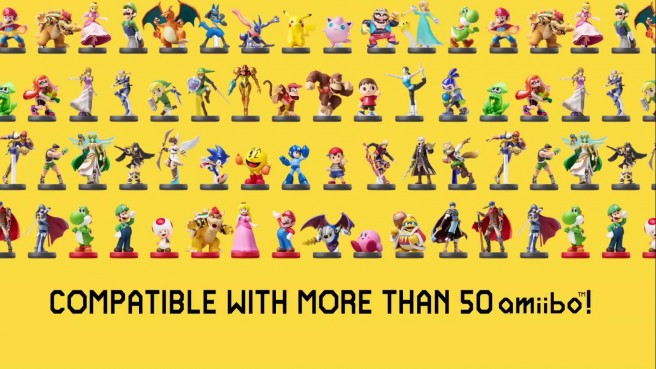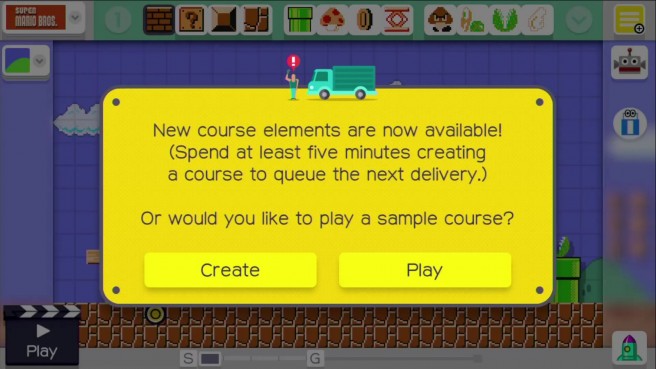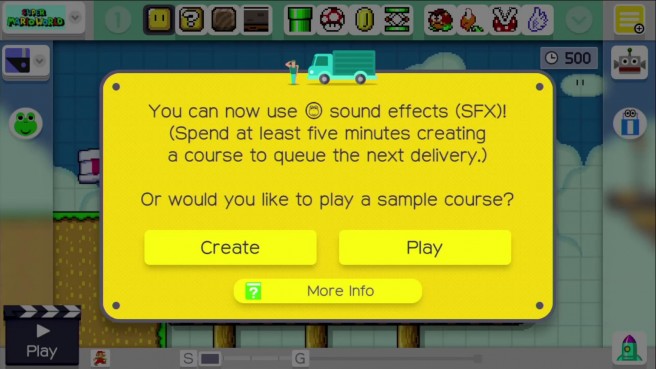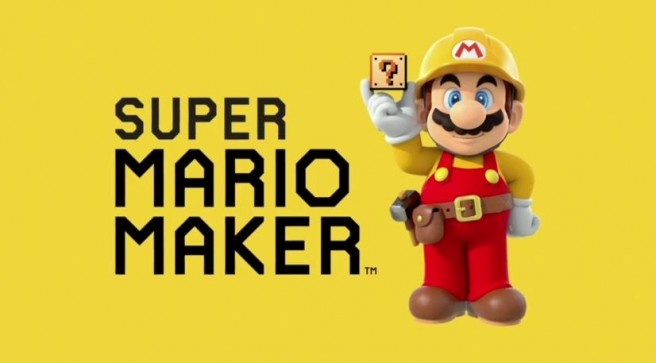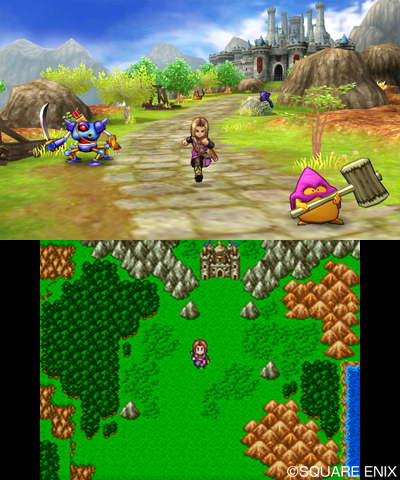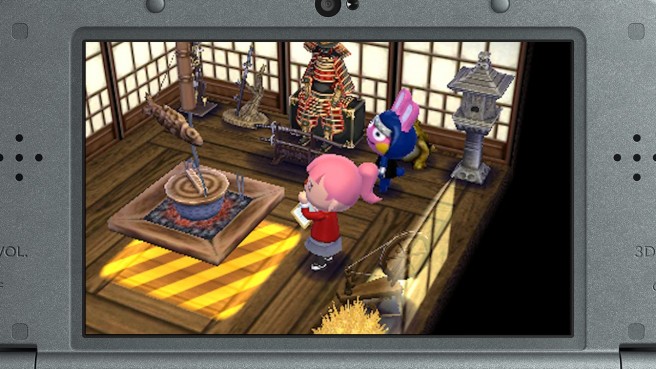July 2015 NPD: Wii U software sales up 10%, 3DS up 35%, Splatoon hits 540k in the U.S.
Posted on 10 years ago by Brian(@NE_Brian) in 3DS, News, Wii U | 21 Comments
Nintendo has provided GamesBeat with a statement concerning this month’s NPD report.
According to the company, Wii U software sales in the U.S. have risen 10 percent through the first seven months of the year compared to the same period in 2014. That’s largely thanks to Splatoon, which is now sitting at almost 540,000 units sold in the region. As was announced last month, the game has sold close to 1.6 million copies worldwide.
“Much of [Wii U’s software] growth can be attributed to Splatoon, which inked nearly 85,000 total units in its third month to bring its lifetime total to nearly 540,000 total units in the United States alone. As of June 30, the game has sold more than 1.6 million total units around the world.”
Nintendo also shared the following regarding 3DS hardware:
“Through the first seven months of 2015, sales of Nintendo 3DS hardware have increased by nearly 35 percent over the same time frame in 2014.”
Splatoon getting Rainmaker mode tomorrow in North America, Saturday in Europe
Posted on 10 years ago by Brian(@NE_Brian) in News, Wii U | 13 Comments
Splatoon’s Rainmaker mode is launching this weekend, Nintendo has announced. It’s arriving tomorrow evening in North America (7 PM PT / 10 PM ET), and Saturday morning in Europe.
Rainmaker, a new ranked battle mode, is coming to #Splatoon tomorrow night at 7 PM PT! pic.twitter.com/soGcoVd3Fv
— Nintendo of America (@NintendoAmerica) August 13, 2015
Rainmaker, a new Ranked Battle mode, comes to #Splatoon on Saturday morning!
https://t.co/gWAOEd3gH6
— Nintendo of Europe (@NintendoEurope) August 13, 2015
Watch a brief introduction of Rainmaker below.
Nintendo Download (8/13/15, North America) – Pandora’s Tower, Wind-up Knight 2, more
Posted on 10 years ago by Brian(@NE_Brian) in 3DS eShop, News, Wii U eShop | 10 Comments
This week’s North American Nintendo Downloads are as follows:
Wii U Download
Wind-up Knight 2 – $7.50
Wii Download for Wii U
Pandora’s Tower – $19.99
3DS Retail
Garfield Kart – $29.99
Paddington: Adventures in London – $29.99
3DS Download
Best of Arcade Games – Air Hockey – $9.99
Best of Arcade Games – Bubble Buster – $9.99
Brave Tank Hero – $4.99
3DS Demo
I Love My Dogs
eShop Sales
Wii U/3DS
– 3D Game Collection (Nintendo 3DS), Murder on the Titanic (Nintendo 3DS) and Suspension Railroad Simulator (Wii U) from Joindots are on sale until 8:59 a.m. PT on Aug. 27.
– Bombing Bastards (Wii U), Spot the Differences: Party! (Wii U) and Talking Phrasebook – 7 Languages (Nintendo 3DS) from Sanuk Games are on sale until 8:59 a.m. PT on Aug. 20.
Wii U
– TNT Racers – Nitro Machines Edition is 37 percent off (reduced from $7.99 to $4.99) until 8:59 a.m. PT on Aug. 13.
– Blocky Bot and Paper Monsters Recut from Mobot Studios are on sale until 8:59 a.m. PT on Aug. 27.
– Jeopardy!, Wheel of Fortune and more titles from Nordic Games are on sale until 8:59 a.m. PT on Aug. 27.
– Stone Shire is 25 percent off (reduced from $7.99 to $5.99) until 8:59 a.m. PT on October 1.
3DS
– Excave II: Wizard of the Underworld is 50 percent off (reduced from $10 to $5) until 8:59 a.m. PT on Aug. 20.
– Alien on the Run, Undead Storm Nightmare and Jump Trials Supreme from G-style are on sale until 8:59 a.m. PT on Aug. 27.
– Nano Assault EX is 25 percent off (reduced from $9.99 to $7.49) until 8:59 a.m. PT on Sept. 3.
– Van Helsing Sniper Zx100 is 47 percent off (reduced from $6.66 to $3.49) until 8:59 a.m. PT on Sept. 10.
Activities
Pokémon Omega Ruby and Pokémon Alpha Sapphire – Get Shiny Rayquaza with Dragon Ascent – Soar into battle with Shiny Rayquaza, available now via the Nintendo Network. This Shiny Rayquaza is not only rare, it is also amazingly powerful. Shiny Rayquaza knows the Dragon Ascent move, which allows it to Mega Evolve and dominate its opponents. This Shiny Rayquaza will be available via Nintendo Network until Sept. 14, so don’t miss this limited opportunity! For more details, go to Pokemon.com/Rayquaza.
Code Name: S.T.E.A.M. “Second Star” Tournament – See how your squad stacks up online in Nintendo’s Public Tournaments. Top players earn unique titles that are visible online and earn major bragging rights with your friends and around the world. The new “Second Star” tournament runs Aug. 14 through Aug. 17. Opt in via the SpotPass feature for notifications about future tournaments. Good luck, agents!
Pokémon Shuffle Summer Special – Buy Jewels and Get Six More Free! – Now until Aug. 16, when you purchase six or more Jewels in the Pokémon Shuffle game with your Nintendo eShop funds, you’ll be eligible for a one-time gift of six additional Jewels for free. For more details, head to http://www.pokemon.com/us/pokemon-news/a-deal-on-pokemon-shuffle-jewels.
Art Academy: Home Studio Art Contest – It’s not too late to enter the Art Academy: Home Studio art contest for your chance to win a $20 Nintendo eShop Card! Upload a time-lapse video of your work to YouTube using the “Recordings” feature in the game and tweet us @NintendoAmerica with a link to your video and the hashtags #ContestEntry and #NintendoArtContest until Aug. 20 at 5 p.m. PT. Check here to view a video about the contest.
Source: Nintendo PR
More: Nintendo Download, top
Pandora’s Tower (Wii download) heading to the North American Wii U eShop tomorrow
Posted on 10 years ago by Brian(@NE_Brian) in News, Wii U eShop | 55 Comments
Pandora’s Tower is coming to the North American Wii U eShop tomorrow as a Wii download, Nintendo’s website reveals. The game should be available for $19.99.
For those who haven’t heard of Pandora’s Tower previously, here’s a handy overview:
Pandora’s Tower tells a haunting tale about a cursed young woman’s slow transformation into a hideous beast and the lengths to which the man she loves will go in order to save her. Aeron must brave the Thirteen Towers, which are suspended in the middle of a valley by chains connected to surrounding cliffs, and use his magical Oraclos Chain weapon to retrieve the flesh of the giant monsters that reside within each tower. He must feed this “master flesh” to Elena in order to reverse her transformation. Aeron’s interactions with Elena during their time together have a direct impact on the story, as the strength of their bond will determine which of the multiple endings is achieved.
Pandora’s Tower arrived on the European Wii U eShop back in April.
More: Ganbarion, Pandora's Tower, top, XSEED Games
Super Mario Maker is compatible with over 50 amiibo
Posted on 10 years ago by Brian(@NE_Brian) in News, Wii U | 10 Comments
Update: The Super Mario Maker amiibo page is now fully updated. The Animal Crossing amiibo cards should work (thanks NicoRobin!).
We have one last piece of important news coming from today’s Super Mario Maker trailer. Over 50 amiibo are supported, including Link, Wii Fit Trainer, and Kirby.
The official amiibo website indicates that all existing and upcoming figures work with the game, with one exception: the Mii Fighters. It’s also unclear if the Animal Crossing amiibo cards will be compatible.
More: Amiibo, Super Mario Maker, top
Super Mario Maker – all tools unlocked over a series of days
Posted on 10 years ago by Brian(@NE_Brian) in News, Wii U | 19 Comments
At launch, Super Mario Maker players won’t be able to experience everything the game has to offer. New content will need to be unlocked over a series of days.
As revealed in today’s trailer, spending at least five minutes with the creation tools unlocks more course elements and themes for the following day.
Here’s what things look like on day two:
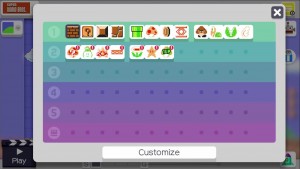
And on day nine:
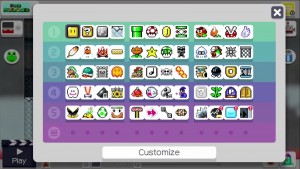
More: Super Mario Maker, top
Super Mario Maker lets you create your own sound effects
Posted on 10 years ago by Brian(@NE_Brian) in News, Wii U | 3 Comments
Today’s Super Mario Maker revealed a brand new element of the game: sound customization.
Players can eventually unlock the sound effect frog, which lets them drag sound effects into the editor. It’s also possible to create entirely new sound effects. A demonstration in the video seemed to show the player talking into the Wii U GamePad, and then using their voice in-game.
Here’s the news about Super Mario Maker’s sound effect options straight from Nintendo:
New sound effects and music block customisation – You can create your own sound effects in Super Mario Maker, with some sounds even generating fun visuals! And by shaking a classic Note Block during level creation, it becomes a Music Block. When something activates one of these Music Blocks, it will play a note based on its height, allowing players to arrange songs of all types.
Source: Nintendo PR
More: Super Mario Maker, top
Official video: “Let’s Watch! Super Mario Maker Overview!”
Posted on 10 years ago by Brian(@NE_Brian) in Videos, Wii U | 5 Comments
Nintendo has published a new overview trailer for Super Mario Maker. We’ve included it below.
More: Super Mario Maker, top
First Dragon Quest XI 3DS screenshots
Posted on 10 years ago by Brian(@NE_Brian) in 3DS, Screenshots | 3 Comments
Square Enix released the first direct-feed screenshots from Dragon Quest XI on 3DS today. View them in the gallery below.
Note: although it seems likely that the PlayStation 4 (“console version”) will be on NX, we won’t be covering that edition until we receive complete confirmation.
More: Dragon Quest XI, Japan, Square Enix, top
Media Create sales (8/3 – 8/9)
Posted on 10 years ago by Brian(@NE_Brian) in 3DS, New Nintendo 3DS, News, Wii U | 36 Comments
The latest Japanese hardware sales from Media Create are as follows:
New 3DS LL – 29,203
PS4 – 14,619
Wii U – 13,007
Vita – 12,841
New 3DS – 7,250
PS3 – 2,567
3DS – 1,657
3DS LL – 898
Vita TV – 496
Xbox One – 200
For comparison’s sake, here are the hardware numbers from last week:
New 3DS LL – 44,994
PS4 – 18,740
Vita – 13,214
Wii U – 11,938
New 3DS – 7,671
PS3 – 2,540
3DS – 1,585
3DS LL – 874
Vita TV – 527
Xbox One – 186
And here are the software charts:
1. [3DS] Animal Crossing: Happy Home Designer – 181,377 / 703,933
2. [3DS] Yo-Kai Watch Busters – 84,939 / 1,202,789
3. [WIU] Splatoon – 35,620 / 519,034
4. [3DS] Rhythm Heaven: The Best Plus – 18,852 / 392,837
5. [PSV] Luminous Arc Infinity – 16,217 / NEW
6. [PSV] Minecraft: PlayStation Vita Edition – 8,100 / 280,140
7. [3DS] Fire Emblem Fates – 7,916 / 396,710
8. [WIU] Mario Kart 8 – 7,256 / 1,088,732
9. [3DS] Animal Crossing: New Leaf – 6,098 / 4,019,151
10. [PSV] IA / VT Colorful – 5,902 / 44,783
11. [PS3] Sengoku Basara 4 Sumeragi – 5,839 / 76,757
12. [PSV] Gal Gun: Double Peace – 5,792 / NEW
13. [PS4] Gal Gun: Double Peace – 5,020 / NEW
14. [WIU] Yoshi’s Woolly World – 4,913 / 54,980
15. [PSV] Taiko No Tatsujin V Version – 4,879 / 79,302
16. [3DS] The Great Ace Attorney – 4,554 / 179,804
17. [3DS] Nobunaga’s Ambition 2 – 4,552 / NEW
18. [3DS] Pokemon Omega Ruby/Alpha Sapphire – 4,486 / 2,677,443
19. [3DS] Cho Tousouchuu Atsumare Saikyou no Tousousya Tachi – 3,729 / 33,289
20. [3DS] Romance of the Three Kingdoms 2 – 3,433 / NEW
